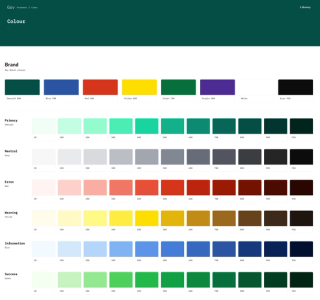“Know the enemy and know yourself, and you need not fear the result of a hundred battles” - Sun Tzu
Here at Kooba, we may not be experts on Chinese warfare in the sixth century BC, but that’s not to say we can’t learn a thing or two from Sun Tzu’s experience. Understanding the relative strengths of both yourself and your competitors is as relevant and as useful as ever, even if it looks slightly different when applied to UX rather than military strategy.
Here’s how we approach competitive analysis as part of our wider UX work at Kooba. For anybody who works in marketing or product management, this should all sound familiar, and that’s because it is! That said, UX teams take some unique and eye-opening approaches to this research, which I’m sure you can learn from.
Positioning
The obvious starting point of any competitive analysis is to understand your own position in the market. Put simply, this means asking the following questions:
- What are we better at, and worse at, than our competitors?
- Which customers are we targeting, and which are our competitors targeting?
- How do we present ourselves, and how do our competitors present themselves?
These will provide you with an immediate set of clues as to where you can improve your product and messaging to bring in new customers. For a UX team, this means identifying existing pain points that users experience with your product, as well as the products of your competitors.
This process should not only diagnose issues your users face, but also identify opportunities where you can outperform rivals by building a uniquely useful UX. By finding gaps in the market, your team can promote and develop your product in order to monopolise these areas and bring in fresh business.
Knowing your user
A key task of any UX team is not only understanding your competitors, but also the entire variety of users within the market which you are competing for. User research is a very broad term, and can stretch from unguided guesswork all the way to rigorous trials conducted with large samples of participants. The goal, however, is always the same: Understanding how, and why, users interact with your product and your brand.
At Kooba, a few of our favourite methods to accomplish this include:
- The development of ideal personas who can be used as models throughout the design process
- The supervised testing of features and tasks with real users, and the curation of their feedback
- The indirect measurement of user preferences through conversion rate optimisation of key features
One particularly creative way to guess what customers want is by observing your competitors. By analysing how your rivals develop and market their products, we can pick up clues on how they perceive market demands. Take this with a grain of salt though, as nothing beats tried and tested findings that you have gathered yourself!
Borrowing from the best
When it comes to web design in particular, a crucial skill is in gauging user expectations. By collecting samples of competitor websites, and noting the prevailing trends of user interfaces and branding, we can gain an understanding of what general type of experience users expect within your industry.
Of course, this doesn’t just mean we should copy these fashions. In fact, the reason we identify these may be to differentiate ourselves from our competitors, and provide a brand that is truly distinctive. First we need to understand the common language that the industry speaks, then we can choose to break or conform with it.
We may also just directly borrow (or steal, depending on your definition!) ideas from competitors. Sometimes there’s just a clever way of designing a good user experience, and no agency should let their pride stand in the way of adopting a similar solution, even if they didn’t exactly think of it first.
Knowledge is power
Good marketing starts with knowledge. By fully understanding your strengths and weaknesses, you can build a strategy that allows you to pick your battles and outcompete your rivals. Good UX research can identify and define these advantages, and allow you to build a powerful and effective marketing operation.








